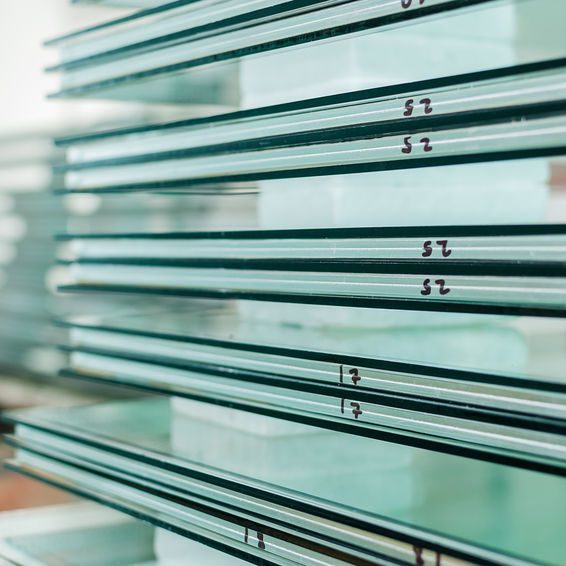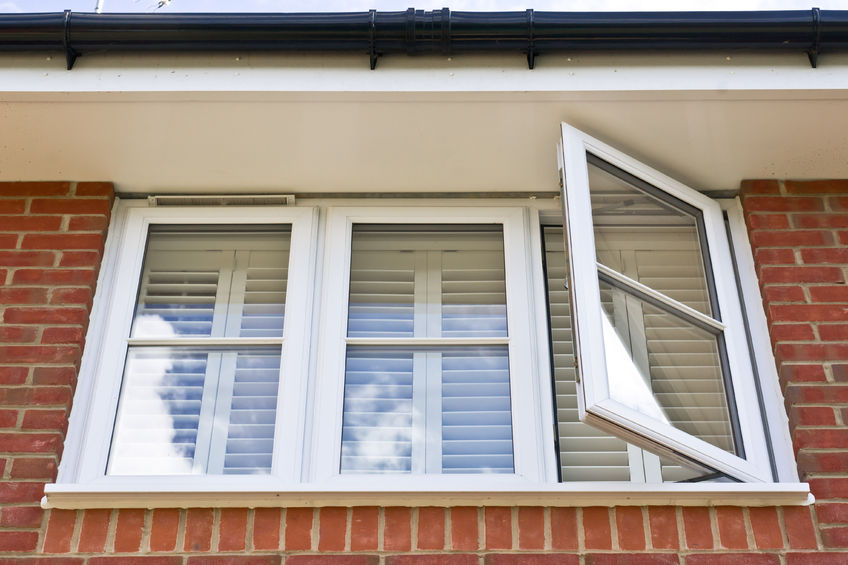
Insulated Glass Definition
The term insulated glass materials are created by stacking multiple pieces of glass together and then sealing the edges. An air space is left to create a single unit and is an effective way to reduce heat transfer through a process of glazing. A configuration most commonly used in architecture is insulating glass is 1/4″ glass with 1/2″ air space and another 1/4″ layer of glass.
Insulated glass materials are often referred to in the industry as an “IGU” and when used in combination with Low-E or reflective glass coatings, it becomes an effective way of conserving energy and comply with energy requirement in building codes, such as using insulated glass in windows. In this article, we are going to answer some common questions about this product and how it is used.
Are glass windows energy efficient?
More than 40% of the average household’s budget is spent on cooling and heating. By installing the correct selection of exterior doors and windows, that amount is significantly lowered. When the savings are considered over the lifetime of the doors and windows, the expense of having them installed more than balances out.
It is the advancements that have been made in this technology using a glass coating, spacer system, and the precision-engineered designs to create insulated glass materials that have achieved these desired results for specific needs and personal preferences.
In areas of the country where the weather may have the extreme cold, extreme heat, or if direct sunlight is constant, installing windows made of insulated glass materials is the best way to assure year-round comfort and energy-saving means. And upgrade to a laminated security glass provides a layer of security, leading to additional peace of mind as well.
How does insulated glass work?
Insulated glass materials aredesigned with the purpose to keep homes warm in the cold months of winter and cool in the hot months of summer. The common manufacturing of insulated glass panels is done by stacking multiple panes of glass together with a spacer in between each one to keep them separated and then seal those pieces of glass and the spacers together around the edge.
Argon, krypton, or other types of noble gas is used to fill the airspace to create the insulating material. There are two surfaced to each glass pane, creating the typical double-paned glass with four surfaces.
This gas that is used to create the insulated glass materials provides additional insulation. Because gas is denser than air, it is less likely to allow heat to conduct through the insulated glass materials, and when combined with a Low-e glass coating, the total u-value is improved.
U-value is how the heat transmission is measured, and the lower the u-value number, the better the insulating glass unit. The u-value for a window is improved over 15% with 90% argon gas fill is used instead of air and in combination with Low-e insulated glass materials. With krypton used in a similar process, the u-value is improved to as much as27%. This combination is costly and time-consuming, which affects the end price paid by the consumer.
Is insulated glass tempered?
Buildings are constructed with four core types of insulated glass materials, with each one having a unique property making them best for certain applications. Those four types of glass are:
- Annealed Glass
- Heat Strengthened Glass
- Tempered Glass
- Insulated Glass
The key variables of these four types of glass are the strength, the breakage pattern and the thermal properties. The creation of these four types is briefly described here:
- Annealed Glass is made from the “float” plant and is manufactured by materials of dolomite, limestone, salt cake, silica sand, and soda ash being melted together at 2700 degrees Fahrenheit. In a nonstop process, it is then floating out over a pool of molten tin.
- Heat Strengthened Glass is heated to 1200 degrees Fahrenheit and cooled rapidly. This enables it to tolerate speedy and uneven swings in temperature when combined with an insulation backing and is in existence of specific Low-E coatings. Heat strengthened glass is stronger than annealed glass because it is placed in 1100 to 1500-degree oven after being sized which strengthens it.
- Tempered Glass resist blunt impact more effectively, and should it be broke, it shatters into zillions of little pieces, lessening the cutting hazards. It is because of this safety feature it is used in doors, especially shower doors, and for glass handrails, and anywhere there is a high rate of activity. Tempered glass is first sized then placed in a tempering oven. It is then cooled quicker than heat strengthened glass to create a permanent evenness of compression and tension within the glass. Next, the surface layers are stretched across the inner layer tightly to create a strength that is four to five times more than annealed glass.
- Insulated Glass is comprised of typical insulated glass and has metal spacers. The thermal properties are improved by insulating the glass. You can find this glass in most of today’s architecture, including in warmer climates to aid with cooling. The glass is insulated by cutting two pieces in identical size, then place a desiccant-filled spacer sandwiched between the two after cleaning them. They are then sealed together with 2 layers of sealant to seal the airspace sandwiched between the two pieces of glass which creates a layer of dry air for insulating. To reach a higher R-value, an inert gas is used to fill that space instead.
Does thicker glass insulate?
Insulating glass materials keeps the cool inside during the summer and the warmth inside during the winter by way of argon or krypton gas installed between two panes of glass. Because gas is denser than air, it provides additional insulation.
Most people ask about the thickness of glass for sound control, but there is a more important feature thicker glass provides, and after installation of a double-pane glass, detecting the thickness is impossible to see. When evaluating the thickness of glass, there are two important facts to take into consideration:
- Thickness Explained
The American windows have 5 basic glass thicknesses that range between 2.2mm to 5.9mm thickness. These are the minimal requirements that many window manufacturers follow to select the thickness of glass for their windows. The thinnest glass is used by most builders for their single strength grade in the residential window arena, also referred to as “builder-grade”.
- Thicker Is Better
For a couple of reasons, double-strength glass is thicker and better than single strength. The thicker the glass, the more durable it is. Thicker glass adds to the window’s structural stability, and thicker glass is more soundproof.
Can you cut insulated glass?
Because insulating glass materials are sealed, therefore, cutting the glass could damage the seal, requiring a replacement to be ordered. Because hardware stores and home centers to not stock insulated glass, it must be order from the manufacturer.

Which is better for residential user, insulated glass vs low e windows?
It is completely a personal choice. Both have benefits that can appeal to you and depending on the climate where you live, one may serve you better than the other.
Double-pane glass is when two pieces of glass have been adhered together while building a window, leaving airspace in between theme that is dried to be airtight. This eliminates the likelihood of condensation forming while maximizing the insulation properties.
Low-E the abbreviation for “low emissivity” an is a metallic particle in a thin layer, or several layers, and applied to the glass. It allows the glass to perform as a sieve where the heat, referred to as long wavelengths, are filtered out, and the light spectrum referred to as short wavelengths pass through.
When it comes down to the final choice, it is a personal matter. Budget is the biggest concern when purchasing the windows, but one should consider the long-term results. By this, we mean to consider how much the better windows will save in the long run with the utilities and as a return on investment should you decide to sell your home. Need to get started on insulated glass for your home in Fort Worth, TX? Dial 817-937-6267 today for Armstrong's Glass & Mirror!
